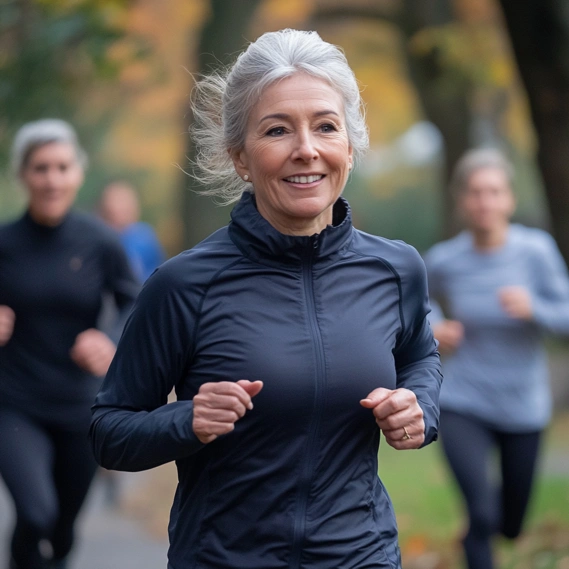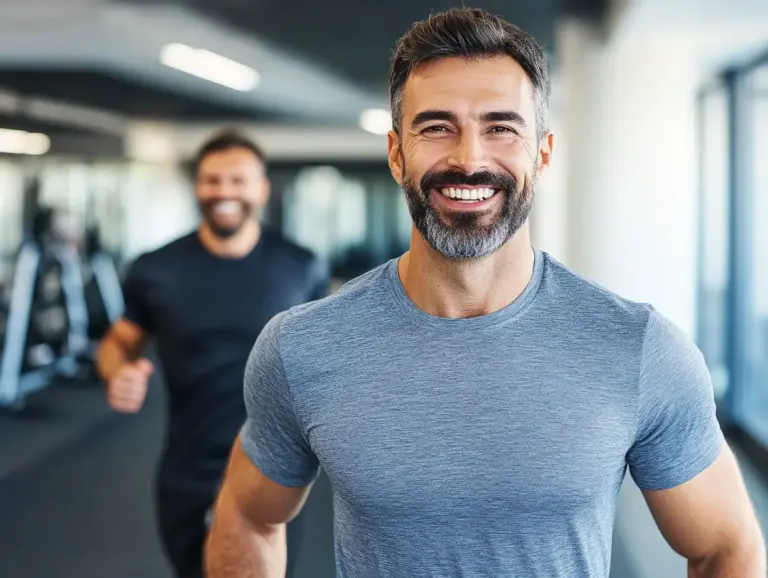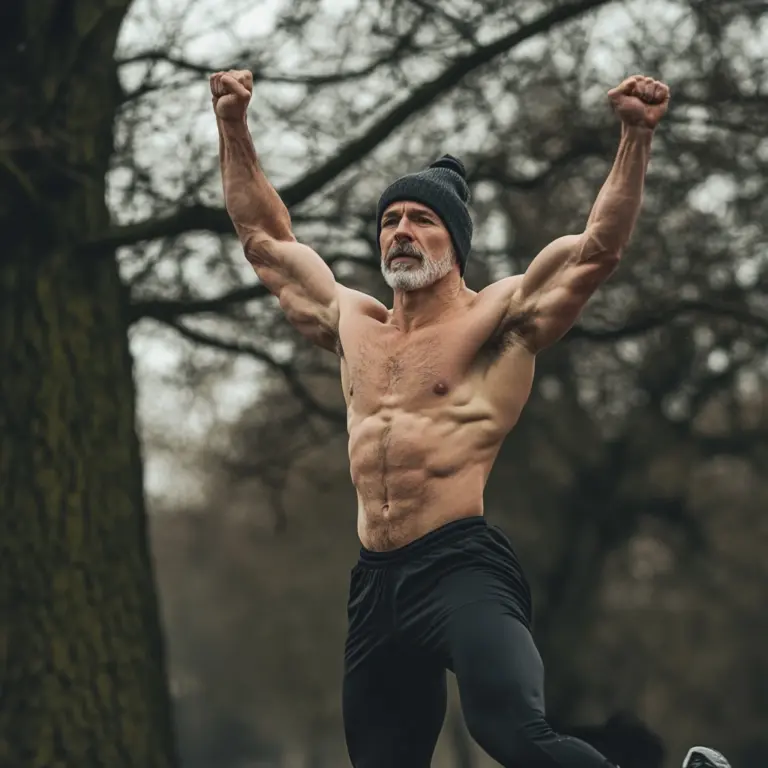10 Essential Exercise Seniors Should Try for Better Health and Mobility
Exercise is crucial for seniors to maintain their health and…
Exercise is crucial for seniors to maintain their health and independence. Most older adults can benefit from these exercises, which are designed to support independence in daily living. This guide will explore exercises for seniors that boost mobility, strength, and help prevent diseases, including specific routines designed for exercise seniors. Discover how to stay active and improve your quality of life as you age.
Key Takeaways
- Regular exercise is essential for seniors, improving mobility, strength, and overall health, while promoting independence and mental well-being.
- A diverse range of exercises such as chair yoga, walking, strength training, and water aerobics can enhance fitness and prevent monotony, leading to long-term adherence.
- Seniors should consult healthcare providers before starting new exercise programs and focus on safety, listening to their bodies, and setting realistic fitness goals.
The Importance of Regular Exercise for Seniors
Regular exercise contributes to a healthy lifestyle and active aging. It enhances mobility, balance, and strength, which are crucial for seniors. Regular physical activity significantly improves health and quality of life for older adults, forming a cornerstone of senior fitness.
Physicians recommend that older adults engage in some type of physical activity daily to maintain health. Exploring the specific benefits of exercise for seniors reveals its critical importance. Regular exercise helps build strength, which is essential for maintaining muscle mass, bone health, and resilience in seniors.
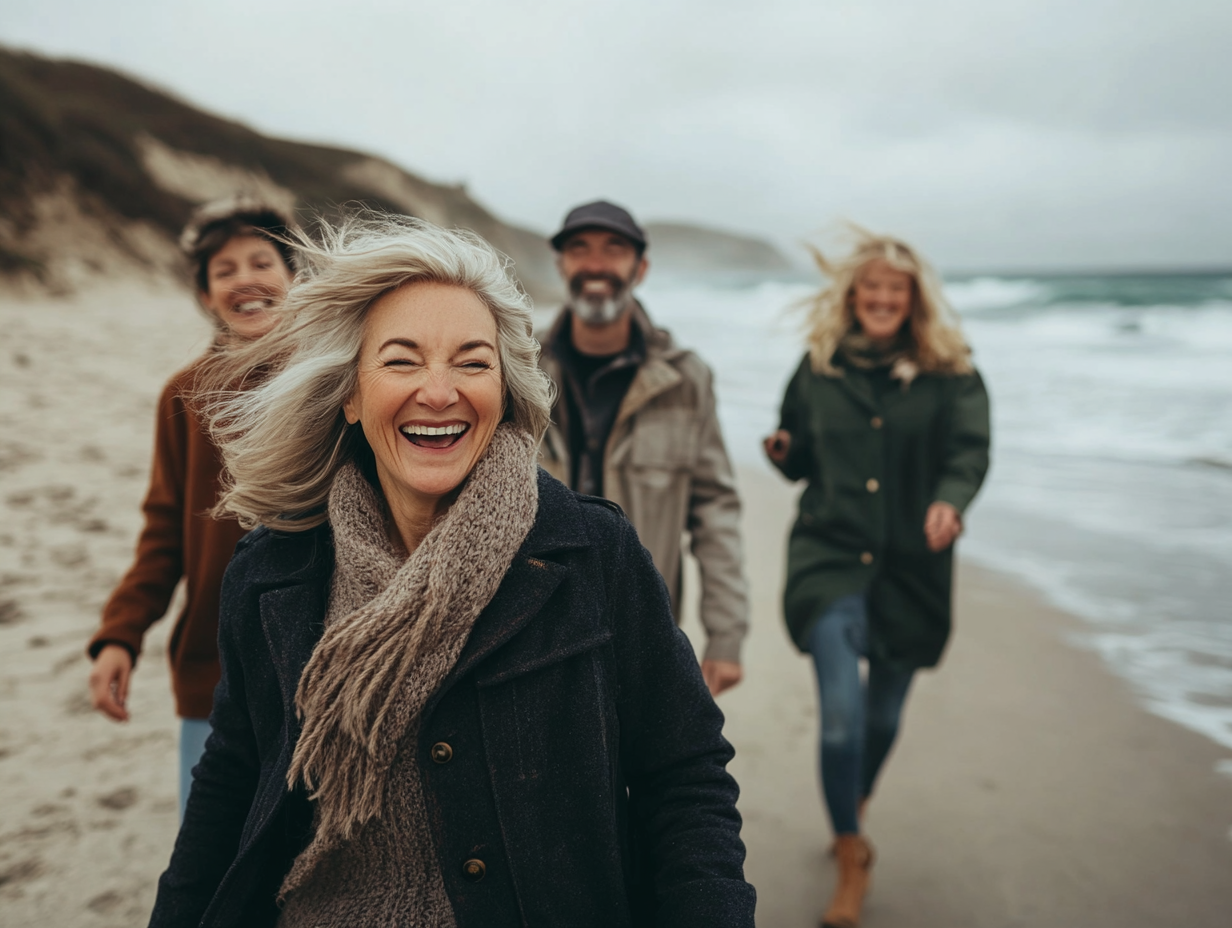
Enhancing Independence Through Exercise
Regular exercise enables seniors to perform daily activities independently, reducing reliance on others. Whether it’s carrying groceries, climbing stairs, or simply getting up from a chair, staying physically active supports independent living. Chair yoga is particularly beneficial for seniors, allowing them to engage in stretching and strengthening without the need for standing. Daily stretching improves range of motion, making activities more comfortable for older adults.
Maintaining muscle strength and flexibility helps seniors prevent falls and enjoy their daily routines independently. This independence not only boosts physical health but also enhances mental well-being, fostering a sense of accomplishment and self-reliance.
Boosting Energy Levels
Engaging in consistent physical activity helps seniors feel more energetic. Regular exercise routines contribute to improved energy levels and diminished fatigue, making it easier to tackle daily activities with vigor. Chair yoga, for instance, improves strength, mobility, balance, flexibility, and mental health, which can enhance overall energy levels.
An active lifestyle not only keeps the body fit but also supports better mental clarity and emotional stability. Incorporating regular exercise into their routines, seniors can notably increase their overall energy and well-being.
Preventing Disease
Exercise significantly lowers the risk of developing chronic diseases like heart disease and diabetes, acting as a critical preventive measure. Engaging in walking exercises strengthens muscles and reduces the risk of heart disease, stroke, diabetes, and colon cancer, making it an effective option for seniors. Incorporating strength training not only helps maintain muscle mass but also improves joint health, flexibility, and balance, which are vital for disease prevention. Muscle-strengthening exercises should be performed alongside 150 minutes of aerobic activity each week for optimal health. Engaging in vigorous intensity activity, when appropriate, can further enhance cardiovascular health and provide additional disease prevention benefits for seniors.
Swimming provides a full-body workout that enhances cardiovascular health and is gentle on joints, making it a suitable exercise for seniors. Additionally, aquatic exercises involve stretching and strengthening the joints and muscles, contributing to overall fitness and disease management.
Supportive footwear prevents slips and provides necessary support during exercises, ensuring safety for seniors.
Improving Cognitive Function
Performing balance exercises regularly can improve mental functioning, including memory and spatial awareness. Regular physical activity is known to enhance brain health and can reduce the risk of cognitive decline. Improved mental functioning through exercises supports better memory retention and enhanced spatial awareness. Engaging in regular exercise not only strengthens physical health but also plays a crucial role in maintaining cognitive vitality.
Staying physically active helps seniors enjoy better sleep quality, improved mood, and a sharper mind, enhancing their quality of life. Whether it’s through walking exercises, strength training, or balance routines, the cognitive benefits of regular exercise are undeniable.
Recommended Exercises for Seniors
Seniors should include various types of exercises, such as aerobic, strength-training, and balance exercises, to enhance overall fitness and prevent monotony. Low-impact activities such as walking, swimming, and cycling help maintain physical activity without putting excessive strain on the body. Many exercises for seniors, such as yoga or bodyweight routines, use their own body weight to safely improve strength and mobility.
Balance and flexibility exercises significantly boost confidence and overall well-being in older adults. Numerous online platforms offer tailored exercise routines for seniors, allowing them to stay active comfortably from home.
Resources such as books and guides on senior fitness provide specific exercise routines and nutrition advice tailored for older adults.
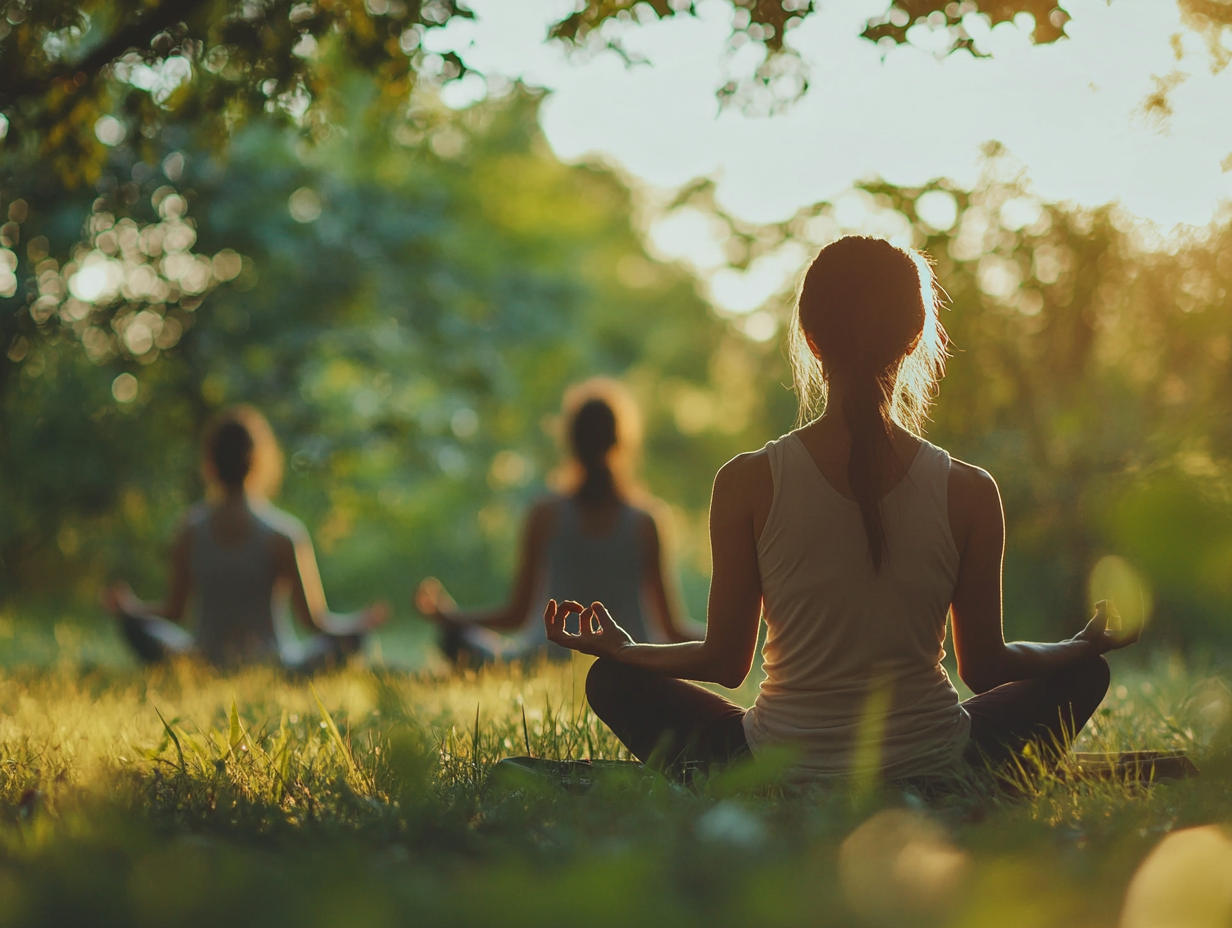
Chair Yoga
Chair yoga is a gentle form of yoga practiced while sitting on a chair or standing and using a chair for support, making it accessible for seniors. Regular practice of chair yoga enhances flexibility and improves balance, which are crucial for preventing falls in older adults. Chair yoga exercises can be adapted to the individual’s fitness level, allowing seniors to gradually increase their flexibility and stability.
Chair yoga promotes relaxation, reduces stress, and positively contributes to mental well-being and cognitive function. This form of exercise provides a safe and supportive environment for seniors to engage in physical activity, helping them maintain mobility and independence.
Walking Exercises
Walking provides significant cardiovascular benefits, making it an excellent choice for seniors. It is one of the least stressful forms of exercise, promoting overall fitness without excessive strain. Seniors should aim to walk a few mornings each week to achieve cardiovascular health goals. Walking can be adjusted in intensity and duration to fit individual fitness levels, making it accessible for many seniors.
Whether it’s a leisurely stroll in the park or a brisk walk around the neighborhood, walking exercises are easy to incorporate into daily routines. This simple yet effective form of physical activity helps maintain a healthy heart, strong muscles, and an active lifestyle.
Strength Training Exercises
Strength training is essential for maintaining muscle mass, improving bone density, and enhancing physical functionality in seniors. Seniors can perform body weight exercises like wall push-ups, calf raises, and shoulder blades squeezes, as well as use resistance bands for strength training. Exercises such as seated leg lifts and knee extensions help strengthen the legs and support knee health. Muscle-strengthening exercises should be performed alongside 150 minutes of aerobic activity each week for optimal health.
Low-impact strength training exercises are gentle on the knees, making them suitable for seniors with joint concerns.
Performing strength exercises on softer surfaces like carpets or yoga mats helps prevent injury. Regular strength training can help reduce the risk of heart disease and stroke in older adults, making it a vital component of a well-rounded exercise regimen.
Water Aerobics
Water aerobics improves strength, flexibility, and balance; it’s easy on the joints and enhances cardiovascular health. This form of exercise not only provides cardiovascular benefits but also minimizes impact on joints, which is crucial for seniors.
Water aerobics classes provide a fun and social way to stay active. The buoyancy of the water supports the body, reducing the risk of injury while providing a comprehensive workout.
Tai Chi
Tai chi can be practiced at a slow pace, making it suitable for seniors looking to improve their coordination and mindfulness. Practicing tai chi aids in improving balance and coordination, essential for preventing falls among seniors. The slow, controlled movements of tai chi are effective in reducing the risk of falls by enhancing stability. Tai chi can be especially helpful for seniors who are concerned about losing balance, as it improves both their stability and confidence.
Tai chi also promotes mental clarity, enhancing focus and mindfulness in older adults. This ancient practice combines physical exercise with meditation, offering a holistic approach to senior fitness.
Flexibility and Balance Exercises
Older adults should incorporate exercises that maintain strength, balance, and flexibility into their weekly routine. Many flexibility and balance exercises for seniors are performed with the feet flat on the floor to ensure stability and safety.
Balance declines with age, and training helps maintain it. Here are some benefits of tai chi:
- Improves balance (maintaining feet flat during certain exercises helps improve balance and prevent falls)
- Enhances flexibility
- Increases muscle strength
- Reduces fall risk
- Enhances posture
- Alleviates arthritis symptoms
- Promotes joint health
- Reduces stress
Exercises tailored to improve balance are essential for seniors. Seniors concerned about falling should engage in exercises that improve strength, balance, and flexibility.
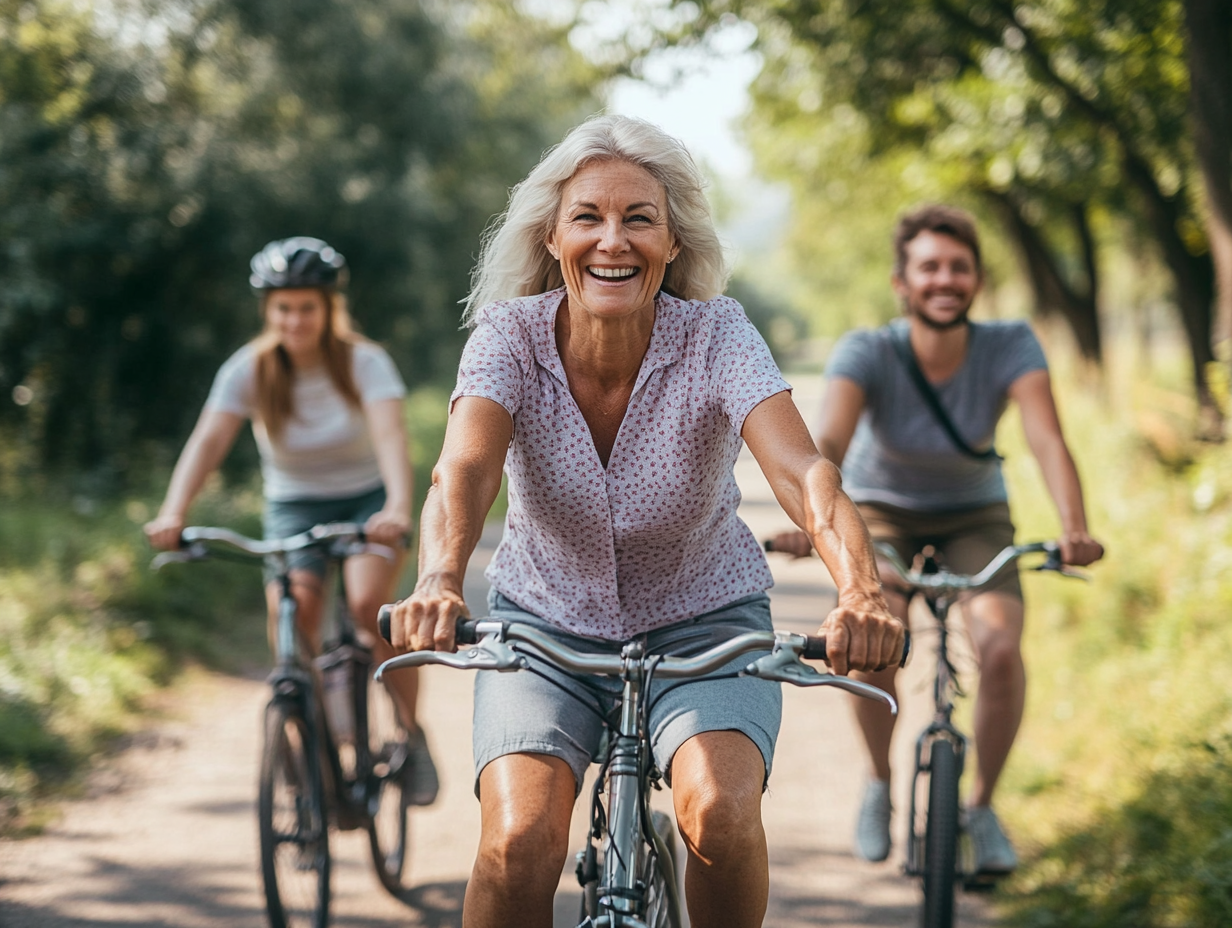
Stretching Routines
Incorporating a variety of stretches can aid in relieve tension muscle tension and enhancing mobility for seniors. Stretching exercises improve range of motion, which is crucial for maintaining independence in daily activities. Recognizing physical limits helps prevent injuries during stretching. For example, seniors can gently pull one arm across the chest or gently pull a leg toward the body while lying down, holding the position to feel a mild stretch. It is important to use gentle, controlled movements to avoid strain and maximize the benefits of stretching.
Seniors are encouraged to engage in a variety of stretching routines to keep their practice interesting and effective. Regular stretching can make daily activities more comfortable and enjoyable, contributing to overall well-being.
Balance Exercises
Balance exercises are essential for older adults as they help prevent falls, which affect one in four older Americans each year. Regular exercise reduces the likelihood of falling by up to 23%, enhancing stability in seniors. Engaging in balance training activities can directly reduce the risk of falls by enhancing stability and coordination.
Seniors can improve balance with activities such as standing position on one leg and walking heel-to-toe. After standing on one leg, switch and repeat the exercise with the other leg to ensure balanced strength and stability. For best results, balance exercises should start at a basic level and gradually increase in difficulty, including movements that engage the left leg. These exercises can be performed daily and several times a day for optimal results.
Safety Tips for Exercising Seniors
Moderate physical activity benefits overall health and reduces fall risk for older adults. Low-impact activities are preferred for seniors as they slowly lower the risk of injury or joint pain.
Gradually building up the intensity and frequency of exercises helps avoid injury and enhance confidence.
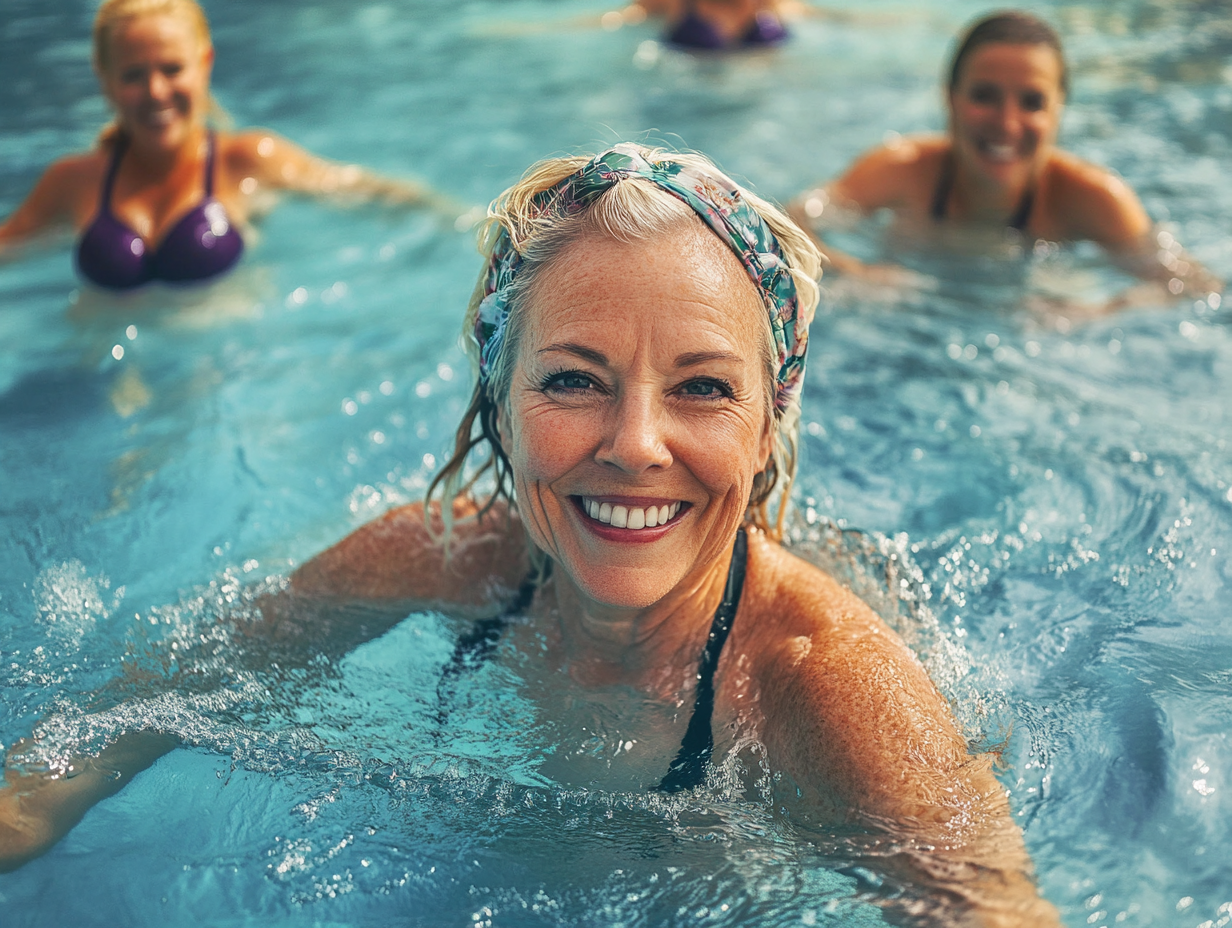
Choosing the Right Equipment
Selecting the right equipment helps seniors exercise safely and effectively. When selecting equipment, seniors should consider factors such as stability, adjustability, and comfort. A sturdy chair can provide essential support for various exercises, helping to reduce the risk of falls.
Before starting an exercise routine, seniors should ensure that the chosen additional equipment suits their personal mobility and safety needs. Proper equipment selection significantly improves the safety and effectiveness of workouts.
Listening to Your Body
Listening to your body helps maintain health and prevent injuries during exercise. Seniors should be mindful of symptoms like excessive fatigue, shortness of breath, or dizziness, which indicate overexertion. If you experience pain, dizziness, or any unusual discomfort while exercising, it’s essential to stop immediately.
Paying attention to these signals helps seniors adjust their exercise routines accordingly and avoid potential harm.
Creating a Sustainable Exercise Routine
Creating a sustainable exercise plan involves understanding personal preferences and physical limitations. Seniors should create a physical activity schedule that balances enjoyment and effectiveness. Local community centers often host fitness classes aimed at seniors, promoting social interaction alongside physical activity.
Regular physical activity enhances sleep quality and provides a necessary rest that reduces anxiety levels, contributing to better quality sleep.
Setting Realistic Goals
Seniors should focus on setting specific and achievable fitness goals to maintain motivation and monitor progress effectively. Setting specific, measurable, achievable, relevant, and time-bound (SMART) goals helps maintain motivation. For example, aiming to take a 10-minute walk three times a week is a specific and measurable goal that helps track progress.
Setting small, measurable objectives can help seniors maintain motivation and track their progress over time. These goals provide a clear pathway to success, making it easier to stay committed to regular exercise routines.
Incorporating Variety
Incorporating a variety of exercises into a routine can help keep workouts interesting and engaging, which is crucial for long-term adherence.
Diverse exercise routines can prevent boredom, reduce the risk of injury, and improve overall fitness by targeting different muscle groups and skills through the best exercises.
Seniors can include a range of exercises such as:
- walking
- strength training
- water aerobics
- tai chi
- chair yoga
- and more
to create a comprehensive workout plan.
Besides strength and aerobic activities, incorporating flexibility and balance exercises like stretching routines and specific balance exercises enhances mobility and prevents falls. This variety ensures that all aspects of physical health are addressed, making exercise more enjoyable and effective.
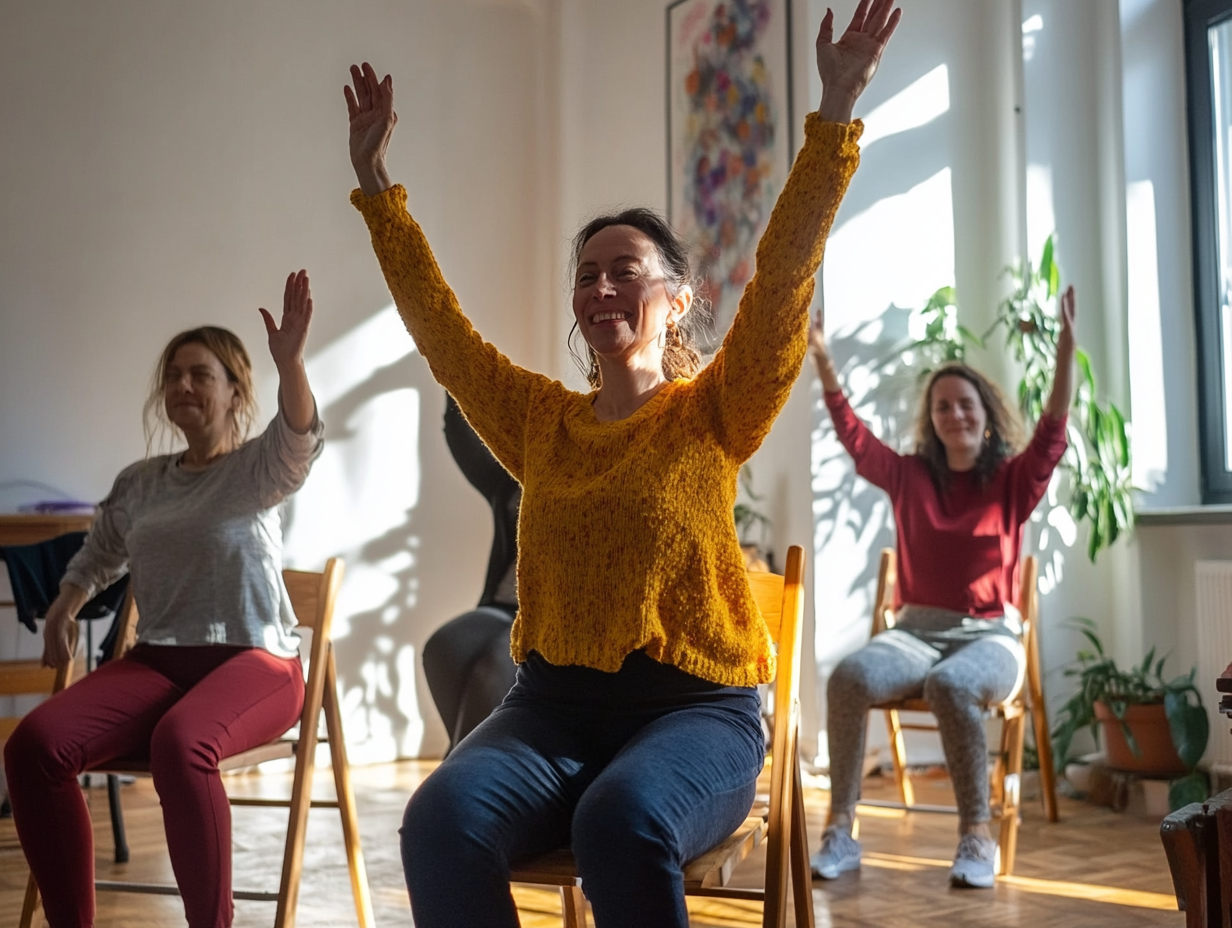
Staying Consistent
Maintaining a consistent exercise schedule can be facilitated by aiming for regular, manageable sessions rather than sporadic, intense workouts. Establishing a routine and setting reminders can enhance commitment to regular exercise among seniors. Consistency is key to reaping the long-term health benefits of physical activity.
By integrating exercise into their daily routine, seniors can ensure that they stay active and maintain their fitness levels. This consistency helps build habits that support overall health and well-being.
Additional Resources for Senior Fitness
Establishing social support, such as joining exercise groups or working out with a partner, can significantly boost motivation. Implementing a regular exercise schedule can be facilitated by finding an accountability partner or joining group classes.
Resources such as books, online classes, and community programs can greatly aid seniors in maintaining an active lifestyle. Encouraging participation in community fitness programs can foster a sense of belonging and commitment to exercise.
Online Exercise Programs
Online exercise programs cater specifically to seniors, focusing on their unique health and fitness needs. These programs offer flexibility, allowing seniors to exercise from home at their own pace and convenience. Seniors can benefit from various types of exercises available online, including yoga, aerobics, and strength training.
Popular online platforms for seniors include YouTube channels, dedicated fitness apps, and virtual classes offered by community canters.
When choosing an online exercise program, seniors should consider factors like ease of use, workout variety, and instructor qualifications.
Community Fitness Classes
Community fitness classes are an excellent way for seniors to engage in regular exercise while enjoying structured and guided routines. These classes not only help improve physical health but also provide a sense of belonging and community, enhancing mental well-being. The social aspect of attending fitness classes can motivate seniors to stay consistent with their exercise routines and make new friends.
Local community canters may offer a variety of fitness classes, such as yoga, tai chi, water aerobics, and strength training specifically designed for older adults. Seniors are encouraged to check their local community canters for available classes and to actively participate for both physical and social benefits.
Educational Materials
Various resources such as books, guides, and online platforms provide valuable information to support seniors in their fitness journey. Online exercise programs designed for seniors offer flexible options for engaging in physical activity from home. Senior centers often organize community fitness classes, providing opportunities for social interaction alongside exercise.
These educational materials can empower seniors with knowledge about safe and effective exercise practices, helping them to stay active and healthy.
Summary
Regular exercise is a cornerstone of healthy aging, offering numerous health benefits such as improved physical function, enhanced cognitive health, and reduced risk of chronic diseases. By incorporating a variety of exercises, such as chair yoga, walking, strength training, water aerobics, and tai chi, seniors can maintain their mobility, strength, and overall well-being. Safety tips, such as consulting healthcare providers and choosing the right equipment, ensure that seniors can exercise safely and effectively.
Creating a sustainable exercise routine involves setting realistic goals, incorporating variety, and staying consistent. Additional resources, including online exercise programs, community fitness classes, and educational materials, can support seniors in their fitness journey. By staying active and engaged, seniors can enjoy a higher quality of life and greater independence.
Frequently Asked Questions
What types of exercises are recommended for seniors?
For seniors, it is advisable to engage in chair yoga, walking, strength training, water aerobics, and tai chi, as these exercises enhance flexibility, balance, and overall fitness. Prioritizing these activities can significantly contribute to a healthier and more active lifestyle.
How can seniors ensure they are exercising safely?
Seniors can ensure they exercise safely by consulting a healthcare provider prior to initiating a new program, selecting appropriate equipment, and being attentive to their body’s signals to prevent injuries.
Why is it important for seniors to stay active?
It is essential for seniors to stay active as it significantly enhances physical health and cognitive function while reducing the risk of chronic diseases. This activity ultimately supports their independence in daily activities.
What are some benefits of community fitness classes for seniors?
Community fitness classes offer seniors structured exercise, foster social connections, and create a sense of belonging, significantly enhancing their physical and mental well-being.
How can seniors stay motivated to exercise regularly?
Seniors can stay motivated to exercise regularly by setting realistic goals, diversifying their activities, and seeking social support through exercise groups or partners. This multifaceted approach fosters consistency and engagement in their fitness routines.

